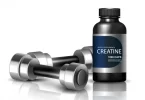We’ve all heard the age-old advice to wait at least 30 minutes after eating before working out. But is there any truth to this common wisdom, or is it just an old wives’ tale? In this article, we’ll explore the question of whether it’s bad to workout after eating, and provide you with all the information you need to know to make an informed decision about your pre-exercise routine.
We’ll cover everything from the science behind digestion and exercise to the potential risks and benefits of working out on a full stomach.
By the end of this article, you’ll have a better understanding of whether you should wait to exercise after eating, and how to make the most of your pre-workout nutrition. So, if you’re ready to discover the truth about working out after eating, let’s dive in and get started!
Firstly, it is important to consider the type and amount of food you have consumed before exercising. Eating a large meal high in fat or fiber can cause discomfort during exercise, as it takes longer to digest.
On the other hand, consuming a small snack or meal high in carbohydrates before exercising can provide energy and improve performance. It is recommended to wait at least 30 minutes to an hour after eating before exercising to avoid discomfort.
Effects of Exercise on Digestion
When you exercise, your body directs blood flow to your muscles, which can slow down digestion. This can cause discomfort, bloating, and even nausea if you exercise too soon after eating. Waiting at least 30 minutes after a snack or mini-meal and up to three to four hours after a larger meal is recommended before exercising.
It’s also important to consider the type of exercise you are doing. High-intensity exercise, such as running or weightlifting, can further slow down digestion and cause discomfort. Low-intensity exercise, such as walking or yoga, may be more comfortable after eating.
Pros and Cons of Working Out After Eating
Benefits
Working out after eating can have some benefits. Here are a few:
- Increased energy: Eating before exercising can provide your body with the necessary fuel to power through your workout.
- Improved performance: When your body has enough energy, you may be able to exercise for longer periods of time and at a higher intensity.
- Better recovery: Eating after exercise can help your body recover and rebuild muscles.
Possible Drawbacks
However, there are also some possible drawbacks to working out after eating. Here are a few:
- Digestive discomfort: Exercising after eating can cause digestive discomfort, such as bloating, nausea, and stomach cramps.
- Decreased performance: If you eat a large meal before exercising, blood flow may be directed to your digestive system instead of your muscles, which can lead to decreased performance.
- Risk of injury: Exercising after eating a heavy meal can increase your risk of injury, as your body may not be able to handle the demands of exercise while also digesting food.
It’s important to note that the timing and amount of food you eat before exercising can impact how you feel during your workout. Eating a small, easily digestible snack before exercising may be a better option than eating a large meal. Additionally, waiting at least an hour after eating before exercising can help reduce the risk of digestive discomfort.
Ideal Time Gap Between Eating and Workout
When it comes to exercising, timing is essential. You want to ensure that you have enough energy to power through your workout, but not so much that you feel weighed down or experience digestive discomfort. So, what is the ideal time gap between eating and working out?
Experts suggest that you should strive to consume a meal 2-3 hours before your workout. This allows sufficient time for your body to digest the food and transform it into energy that you can utilize during your workout. Your pre-workout meal should comprise a blend of protein, carbohydrates, and fats to furnish sustained energy throughout your exercise session.
If you don’t have 2-3 hours to spare before your workout, you can opt for a smaller snack 30 minutes to an hour before exercising. However, be mindful of the type of food you choose.
It’s recommended to steer clear of foods that are high in fat or fiber, as they may take longer to digest and could lead to discomfort during your workout. Instead, opt for a light snack that is high in carbs and protein, such as a banana with peanut butter or a protein shake.
On the other hand, if you wait too long after eating to exercise, you may feel sluggish and lack the energy needed to perform at your best. Waiting more than three hours after a meal to exercise can also cause your blood sugar levels to drop, leading to fatigue and dizziness.
Factors Influencing Post-meal Workouts
When it comes to working out after eating, there are a few factors that can influence whether it’s a good idea or not. Here are two key factors to consider:
Type of Food Consumed
The type of food you eat before a workout can have a big impact on how you feel during your exercise session. For example, if you eat a large, heavy meal that’s high in fat and protein, you may feel sluggish and have trouble performing at your best. On the other hand, if you eat a light, carbohydrate-rich snack, you may have more energy and be able to push yourself harder.
Here are some tips for choosing the right foods to eat before a workout:
- Stick to simple carbohydrates, such as fruit or a small serving of whole-grain bread, for quick energy.
- Avoid fatty or high-protein foods, which can take longer to digest and make you feel sluggish.
- Don’t eat too much, as a full stomach can be uncomfortable during exercise.
Intensity of the Workout
The intensity of your workout is another important factor to consider when deciding whether to exercise after eating. If you’re planning a low-intensity workout, such as a leisurely walk or gentle yoga session, you may be able to exercise right after eating without any issues. However, if you’re planning a high-intensity workout, such as a long run or intense weightlifting session, it’s generally recommended that you wait at least an hour after eating before starting your workout.
Here are some tips for timing your post-meal workouts:
- If you’ve eaten a large meal, wait at least 2-3 hours before starting a high-intensity workout.
- If you’ve eaten a light snack, you may be able to start a low-intensity workout right away.
- Pay attention to your body and how you feel during your workout. If you’re feeling sluggish or uncomfortable, it may be a sign that you need to wait longer before exercising after eating.
Practical Tips for Working Out After Eating
If you’re planning to work out after eating, here are some practical tips to keep in mind:
- Wait at least an hour: It’s best to wait at least an hour after eating a meal before exercising. This gives your body enough time to digest the food and avoid any discomfort during your workout. However, if you’re having a small snack, waiting 30 minutes should be enough.
- Choose the right foods: Eating the right foods before your workout can help you perform better. Opt for foods that are high in carbohydrates and protein, such as a banana with peanut butter or a protein shake.
- Stay hydrated: Drinking water before, during, and after your workout is crucial, especially if you’ve just eaten. Aim to drink at least 16 ounces of water before your workout and sip on water throughout your workout to stay hydrated.
- Start slow: If you’re new to working out after eating, start slow and gradually increase the intensity of your workout. This will help your body adjust to the new routine and avoid any discomfort or nausea.
- Listen to your body: Pay attention to how your body feels during your workout. If you start to feel nauseous or uncomfortable, take a break and give your body time to digest the food. It’s better to take it slow and avoid any discomfort than push yourself too hard and risk injury or illness.
Remember, working out after eating can be beneficial for your performance, but it’s important to do it safely and responsibly. By following these practical tips, you can enjoy the benefits of exercising after eating without any discomfort or negative side effects.
Conclusion
In summary, exercising after eating can cause discomfort and digestive issues, but it ultimately depends on the individual and the type of exercise. It is generally recommended to wait at least 1-2 hours after a moderate-sized meal and 30 minutes after a snack before exercising. This allows enough time for digestion and reduces the risk of cramping, nausea, and acid reflux.
However, it is important to listen to your body and adjust accordingly. Some people may be able to exercise comfortably after eating, while others may need to wait longer. Additionally, certain types of exercise, such as low-intensity activities like walking or yoga, may be more tolerable after eating than high-intensity exercises like running or weightlifting.
If you do decide to exercise after eating, there are some tips to keep in mind. Eating a small snack before exercise can provide energy and prevent low blood sugar, but avoid heavy or high-fat meals. Stay hydrated before, during, and after exercise to aid digestion and prevent dehydration. If you experience discomfort or symptoms like nausea or heartburn, stop exercising and rest until you feel better.
Overall, the decision to exercise after eating should be based on personal preference and comfort level. As long as you listen to your body and take precautions, exercising after eating can be a safe and effective way to stay active and healthy.







